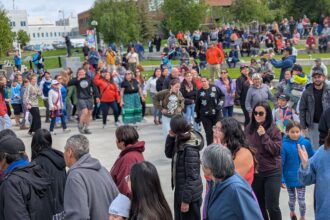The morning sun cast long shadows across the grounds of the Woodland Cultural Centre as drums began to beat, calling visitors to gather for what would become a day of profound cultural significance. Last Wednesday marked National Indigenous Peoples Day across Canada, and at this historic site—once the Mohawk Institute Residential School—the atmosphere vibrated with a powerful duality: acknowledging painful history while celebrating the enduring strength of Indigenous cultures.
As someone who has covered cultural events across the country, I can confidently say there was something uniquely moving about this particular celebration. Perhaps it was the location itself—a place once meant to erase Indigenous identity now transformed into a beacon for its preservation and revitalization.
The day-long celebration featured a remarkable array of activities that drew hundreds of visitors from across the region. Traditional dance performances captivated the crowd as dancers in vibrant regalia moved with precision and grace, each step and gesture carrying centuries of meaning. The air filled with the aromatic smoke of sacred medicines while knowledge keepers shared stories that have been passed through generations—oral histories that have survived despite systematic attempts to silence them.
What struck me most profoundly was the intergenerational nature of the gathering. Elders sat alongside young children, creating a living bridge between past and future. In one corner, youth engaged with traditional crafts, their hands learning what their ancestors knew, while nearby, others explored interactive educational displays about Indigenous histories and perspectives.
“This day represents so much more than a single celebration,” explained Janis Monture, Executive Director of the Woodland Cultural Centre. “It’s about acknowledging the ongoing presence and contributions of First Nations, Inuit, and Métis peoples to this country, while creating space for cultural reclamation and healing.”
The timing of this year’s celebration carries particular weight. As Canada continues to grapple with the legacy of residential schools and the ongoing process of reconciliation, events like this serve as vital opportunities for both Indigenous and non-Indigenous Canadians to engage in meaningful cultural exchange and education.
Many visitors I spoke with noted the profound juxtaposition of celebrating Indigenous resilience in a building that once served as a tool of cultural genocide. One elder, who requested anonymity, shared, “My grandmother walked these halls as a child. She wasn’t allowed to speak her language or practice her traditions. Today, I’m here speaking our language freely, teaching our ways. That’s resistance. That’s survival.”
Food vendors offered traditional cuisine—from bannock to wild game—providing literal nourishment alongside the cultural sustenance of the day. Artisans displayed intricate beadwork, carvings, and textiles that demonstrated the continuing evolution of Indigenous artistic traditions.
It’s worth noting that while National Indigenous Peoples Day provides a focused moment for celebration and reflection, the work of cultural preservation and reconciliation continues year-round at centers like Woodland. Their ongoing programming, museum exhibitions, and educational initiatives serve as crucial resources for communities seeking to understand the complex histories and vibrant present of Indigenous peoples.
As the day wound to a close with a final drum circle, the resonance of the beats seemed to echo the resilience of cultures that have endured despite centuries of attempted erasure. In that moment, National Indigenous Peoples Day revealed itself not simply as a celebration, but as a profound act of continuity—a declaration that Indigenous cultures are not relics of the past, but living, evolving foundations of Canada’s present and future.
For those who missed this year’s celebration, I encourage engagement with Indigenous cultural events throughout the year. As one young participant wisely noted, “Learning about Indigenous cultures shouldn’t be limited to one day—it’s a lifetime journey of understanding.”
In an era where meaningful cultural exchange has never been more important, the celebrations at Woodland Cultural Centre offered both a model for commemoration and a pathway toward deeper understanding—one beat, one story, one shared experience at a time.
For more explorations of cultural events and their significance, visit our CO24 Culture section, or read more about evolving social patterns in CO24 Trends.


















